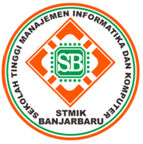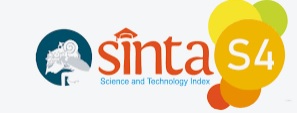Perancangan Akuisisi Data Monitoring Kondisi Area Mesin Calendering Tekstil Dengan IoT
Abstract
Calendaring is intended to obtain fabric with a flat, smooth and shiny surface by passing and pressing the fabric between hot calendaring rollers. Good results will be obtained if the fibers in the fabric are in a plastic condition, namely in a state of moisture and heat. This research aims to inform the condition of the calendaring machine area for workers because workers very rarely occupy the conditions of the area because the environment is hot and noisy. The Internet of Things (IoT) system for monitoring the condition of the calendering machine area with data acquisition consists of temperature, humidity, fire, vibration, and air quality sensors. The NodeMCU collects data from the calendering machine area sensors, then sends it to the web server using the POST method over a WiFi connection. The web server receives the data and displays it in real-time in graphical form. Operators can access it from a centralized control room to efficiently monitor the condition of the machine. Through the implementation of this data acquisition system, it is expected that the use of IoT in monitoring the condition of the calendaring machine area can improve operational efficiency, optimize preventive maintenance, and reduce overall production costs. Thus, the results of this research can make a positive contribution to the textile industry in achieving better performance and improving the reliability of calendering machines.
Keywords: Calendering textile; Internet of Things; monitoring; NodeMCU
Â
Abstrak
Penyempurnaan kain kalender (calendaring) dimaksudkan untuk memperoleh kain dengan permukaan rata, halus dan berkilau dengan cara kain dilewatkan dan ditekan diantara rol-rol kalender yang panas. Hasil yang baik akan diperoleh bila serat pada kain dalam kondisi plastis yaitu dalam keadaan lembab dan panas. Penelitian ini bertujuan untuk menginformasikan kondisi area mesin calendaring untuk para pekerja dikarnakan para pekerja sangat jarang menempati kondisi area tersebut dikarenakan lingkungannya panas dan bising. Sistem Internet of Things (IoT) untuk memonitoring kondisi area mesin calendering dengan akuisisi data ini terdiri dari sensor suhu, kelembaban, api, getaran, dan kualitas udara. NodeMCU mengumpulkan data dari sensor area mesin calendering, lalu mengirimkannya ke web server menggunakan metode POST melalui koneksi WiFi. Web server menerima data tersebut lalu ditampilkan secara real-time dalam bentuk grafik. Operator dapat mengaksesnya dari tempat control terpusat control room untuk memantau kondisi mesin secara efisien. Melalui implementasi sistem akuisisi data ini, diharapkan penggunaan IoT dalam monitoring kondisi area mesin calendaring ini dapat meningkatkan efisiensi operasional, mengoptimalkan pemeliharaan preventif, dan mengurangi biaya produksi secara keseluruhan. Dengan demikian, hasil penelitian ini dapat memberikan kontribusi positif terhadap industri tekstil dalam mencapai performa yang lebih baik dan meningkatkan kehandalan mesin calendering.
Kata kunci:Â Calendering textile; Internet of Things; Monitoring; NodeMCU
References
I. Khoirul Anaam, T. Hidayat, R. Yuga Pranata, H. Abdillah, and A. Yhuto Wibisono Putra, “Pengaruh trend otomasi dalam dunia manufaktur dan industri,†Jl. Ciwaru Raya No, vol. 25, pp. 46–50, 2022.
shubhkam V, “Indorama Ventures,†https://www.indoramaventures.com/, 2023.
F. Civerchia, S. Bocchino, C. Salvadori, E. Rossi, L. Maggiani, and M. Petracca, “Industrial Internet of Things monitoring solution for advanced predictive maintenance applications,†J Ind Inf Integr, vol. 7, pp. 4–12, Sep. 2017, doi: 10.1016/j.jii.2017.02.003.
K. Mykoniatis, “A real-time condition monitoring and maintenance management system for low voltage industrial motors using internet-of-things,†in Procedia Manufacturing, Elsevier B.V., 2020, pp. 450–456. doi: 10.1016/j.promfg.2020.02.050.
M. Saez, F. Maturana, K. Barton, and D. Tilbury, “Real-time Manufacturing Machine and System Performance Monitoring Using Internet of Things,†IEEE Transactions on Automation Science and Engineering, vol. 15.4, pp. 1735–1784, 2018, doi: 10.1109/TASE.2018.2784826.
M. N. Hassan, M. R. Islam, F. Faisal, F. H. Semantha, A. H. Siddique, and M. Hasan, “An IoT based environment monitoring system,†in Proceedings of the 3rd International Conference on Intelligent Sustainable Systems, ICISS 2020, Institute of Electrical and Electronics Engineers Inc., Dec. 2020, pp. 1119–1124. doi: 10.1109/ICISS49785.2020.9316050.
M. Thibaud, H. Chi, W. Zhou, and S. Piramuthu, “Internet of Things (IoT) in high-risk Environment, Health and Safety (EHS) industries: A comprehensive review,†Decis Support Syst, vol. 108, pp. 79–95, Apr. 2018, doi: 10.1016/j.dss.2018.02.005.
S. Ahmad et al., “Analyzing critical failures in a production process: Is industrial iot the solution?,†Wirel Commun Mob Comput, vol. 2018, 2018, doi: 10.1155/2018/6951318.
A. Saputra, “Rancang Bangung Sistem Monitoring Kualitas Udara Berbasis Web Memanfaatkan MQ-135 DAN ARDUINO,†Jurnal Sistem dan Teknologi Informasi , vol. 8(2), pp. 91–97, 2023.
M. Buchenau and J. F. Suri, “Experience Prototyping,†2000.
R. Shrestha, “Study and Control of DHT11 Using Atmega328P Microcontroller,†2019, [Online]. Available: http://www.ijser.org
M. Elmnifi et al., “Development of Low cost and Multi-Material Sensing Approach for MQ135 Sensor Libya Sirt Oil Company, 2 , Libya Ras Lanuf Oil and Gas Production Company.†[Online]. Available: http://xisdxjxsu.asia
F. Z. Rachman et al., “Design of the early fire detection based fuzzy logic using multisensor,†in IOP Conference Series: Materials Science and Engineering, Institute of Physics Publishing, Jan. 2020. doi: 10.1088/1757-899X/732/1/012039.
I. El, A. Pakpahan, P. Sihombing, and M. K. M. Nasution, “Analysis of the Sw-420 Vibration Sensor Performance on Vibration Tools by using a Fuzzy Logic Methodâ€, doi: 10.5220/0010336000003051.
J. J. Garrett, “Ajax: A New Approach to Web Applications,†2005. [Online]. Available: http://www.adaptivepath.com/publications/essays/archives/000385print.php
A. Fernandes and P. Ø. Braarud, “Exploring Measures of Workload, Situation Awareness, and Task Performance in the Main Control Room,†Procedia Manuf, vol. 3, pp. 1281–1288, 2015, doi: 10.1016/j.promfg.2015.07.273.
How To Cite This :
Refbacks
- There are currently no refbacks.










